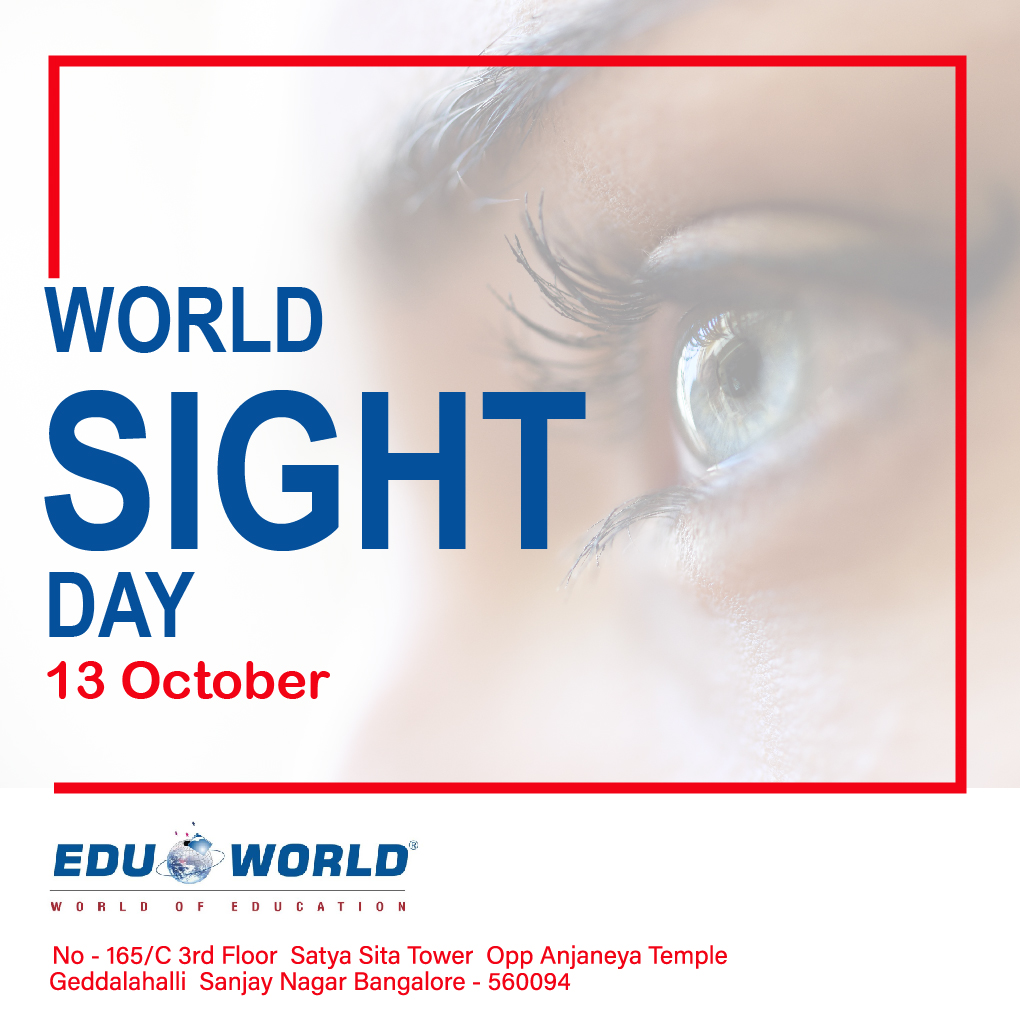Every year on the second Thursday in October, World Sight Day raises awareness of vision impairment, including blindness, throughout the world. The subject for this year’s World Sight Day, Love Your Eyes, will be observed on October 13, 2022. At least 1 billion people worldwide suffer from near- or far-sightedness, which is either preventable or unaddressed. Persons of all ages are affected by vision impairment, with people over 50 making up the majority. All elements of life, including everyday personal activities, interacting with the community, school and employment chances, and the capacity to use public services, can be significantly and permanently impacted by vision impairment and blindness. The two main causes of vision impairment are untreated refractive error and untreated cataract. However, other factors must be considered and taken into consideration, including trauma, glaucoma, diabetic retinopathy, age-related macular degeneration, and infectious illnesses of the eye. Recently, Member States set two new global goals for eye care by 2030 at the 74th World Health Assembly: a 40% increase in the effective coverage of refractive defects and a 30% increase in the effective coverage of cataract surgery. These goals will be crucial in the future for delivering high-quality services as well as expanding access to eye care globally.
The most important sense in our body is vision, which is essential for every aspect and stage of life. Without vision, it is difficult to learn to walk, read, participate in class, and work. We take vision for granted.
When the visual system and/or one or more of its vision functions are impacted by an eye problem, vision impairment results. A vision impairment affects a person seriously throughout their entire life. However, by getting quick access to high-quality eye care and rehabilitation, many of these effects can be avoided. For good reason, eye conditions like cataract, trachoma, and refractive error are the main focus of preventative and other eye care measures; nonetheless, the significance of eye conditions like dry eye and conjunctivitis, which normally do not cause vision impairment, must not be disregarded. These disorders are typically among the main causes of visits to eye care facilities worldwide. Eye problems are surprisingly prevalent. Anyone who lives long enough will eventually get at least one eye ailment. At least 2.2 billion individuals around the world are either blind or have vision impairments, at least 1 billion of which might have been avoided or are still unaddressed. However, more accurate information on the met and unmet needs for eye care is needed for planning. Additionally, not everyone bears the same amount of the burden of visual impairment and eye disorders.
In low- and middle-income nations, underrepresented populations including women, immigrants, indigenous peoples, people with specific types of disabilities, and rural areas, the burden is typically heavier. In the future decades, there will be a sharp rise in the number of persons with eye disorders, visual impairment, and blindness due to population expansion, ageing, behavioural and lifestyle changes, and urbanisation. Across the life course, a variety of efficient techniques are available to address the demands related to eye disorders and vision impairment. Among these are measures for health promotion, prevention, treatment, and rehabilitation, some of which are among the easiest and most affordable health care interventions to put into practise.
Edu world on this occasion calls attention to the value of eye health and the urgent need for better eye care facilities. On this day, a number of organisations hold free health fairs and offer free eye exams.




